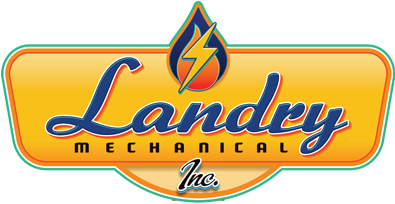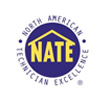Unless you’re an HVAC professional, chances are that you don’t know how to evaluate your new home’s heating and cooling system. This can put a damper on the excitement of moving into your new residence because you worry about the comfort system giving out suddenly. Consider these nine elements to evaluate your HVAC system’s condition and whether you will need to have it replaced.
1. Assess the System’s Life Expectancy
Start by comparing your system’s age to the expected service life of the constituent components when properly maintained. Forced air gas furnaces should last 15 to 20 years with central air conditioners serving about 10 to 15 years. If your system’s age is nearing these limits, you may want to start planning for a replacement.
The challenge is uncovering when your system was manufactured. For your furnace, you’ll want to look for the serial number, which will give you the date. You’ll either find this on the label attached to the back of the access panel or stamped on the circulating fan motor or blade. If you have to look at the motor, be sure to kill the power at the circuit breaker to prevent a possible injury.
Once you have the serial number, take the first four digits to learn when it was manufactured. The first two digits correlate to a week in the year, and the second two are the year that it was produced.
For your air conditioner, simply find the stamped nameplate attached to the housing on the outside condensing unit. The plate should have the date of manufacture included on it.
2. Evaluate Maintenance History
The service life is in part determined by how well the system has been maintained. You may not receive extensive maintenance records from the previous owner, but you can get a sense of how much attention the equipment received.
Start by turning the system off and removing the access panel. Look at how much dust and dirt has collected on the circulating fan. You can also pull out the furnace filter and check to see if it’s clogged. The more dirt collected on these areas, the less air will flow through the equipment, and the more strain it has experienced. This is a key indicator of system neglect and likely a shorter life expectancy.
3. Get a Professional Tune-up
An easy way to get an assessment of your system’s condition is to have a professional tune-up performed. Based on its internal condition, a trained technician will be able to easily tell if the system has been neglected. Further, they will test the system’s cycling to see if there is anything working less than optimally. Finally, the tune-up will give you an initial boost to your heating or cooling efficiency by ensuring that there isn’t unusual strain.
4. Consider Your Thermostat’s Condition
Given that it regulates when the equipment turns on and off, your thermostat is a critical part of your heating and cooling system. However, the thermostat could stop working as well as it ages because the temperature sensors become less sensitive. This is true whether you have an old mercury thermostat or the newer digital models.
In addition to becoming less sensitive, older models also have fewer functional options, particularly in programming capabilities. If your thermostat still uses a mercury switch or it doesn’t have a program function, it’s likely a signal that you have an older system. Most companies include a new thermostat when they install either a new air conditioner or furnace.
5. Assess Physical Condition
Next, look at the physical condition of your system, paying particular attention to signs of corrosion. Without digging too deep into the internal workings, you’d look for rust on the furnace or AC housing. Also, look for excessive moisture around your furnace even if you’re running the air conditioning. Finally, look to see if there’s discolored water or bits of metal on the drip pan under your furnace.
In your outdoor air conditioner unit, check for signs that it has been impacted by flying debris, including dents and cracks in the housing. If you can see the fins on your condensing coil, look to see if they’re bent flat, restricting the airflow through the coil.
6. Reevaluate Your Capacity Needs
Regardless of the age of your system, it’s important to make sure that its heating and cooling capacity matches the serviceable area. If it’s too small, your system will have long cycles, using extra energy and adding strain to the equipment. It’s common for the system size to become mismatched when renovations are completed that change the heating and cooling area, such as finishing a basement or attic or putting on a room addition.
For a quick review, you’ll need to calculate your heating and air conditioning separately. For your heating, multiply your square feet by 50, which will give you the minimum recommended BTU capacity. Multiply the square feet by 30 for your air conditioner. You can then compare this to the capacity of your current system.
7. Test Temperature Rise or Fall
If you have a probe thermometer, you can check the temperature of the air coming out of the vent. There isn’t a set temperature for the air, but it should rise for heat or fall for air conditioning. If your furnace is running properly, the air from your vents should have a rise of 45 to 70 degrees compared to the return air temperature. When your air conditioning is running, the fall should be about 20 degrees Fahrenheit. If either of these differences is less than they should be, your system needs some attention.
8. Listen for Strange Sounds
Your system should run nearly silently when it’s operating correctly. If it makes screeching, scraping, banging, hissing, gurgling, or buzzing sounds, there is a problem. These can range from minor issues like your ductwork flexing to major issues like a cracked heat exchanger. Whatever the problem, the longer you allow it to go unattended, the more likely it is that you’ll need substantial repairs or a system replacement.
9. Check Temperatures Throughout Your Home
When your system ages, it will stop pushing as much air through your home. This may be due in part to dust and dirt collecting throughout the system. It may also be due to parts like the circulating fan running less efficiently than intended.
Start this check by inspecting each of your vents to make sure they’re open and that each has at least a 2-inch clearance above and around it. Next, set up thermometers throughout the house, preferably one in each room. Lacking that, at least put one in the room nearest the air handler and at the farthest points away from the handler. The temperature should be within a degree or two. If it’s more than a few degrees different, you’ll need some work on your system.
Residents of Sutton, MA and the surrounding areas have turned to Landry Mechanical Inc Plumbing HVAC & Electric since 2008 for their home comfort needs. Our expert team provides heating and air conditioning maintenance, repair, and installation combined with residential plumbing and electrical services. Call to schedule a tune-up appointment for your new home’s HVAC system today.




